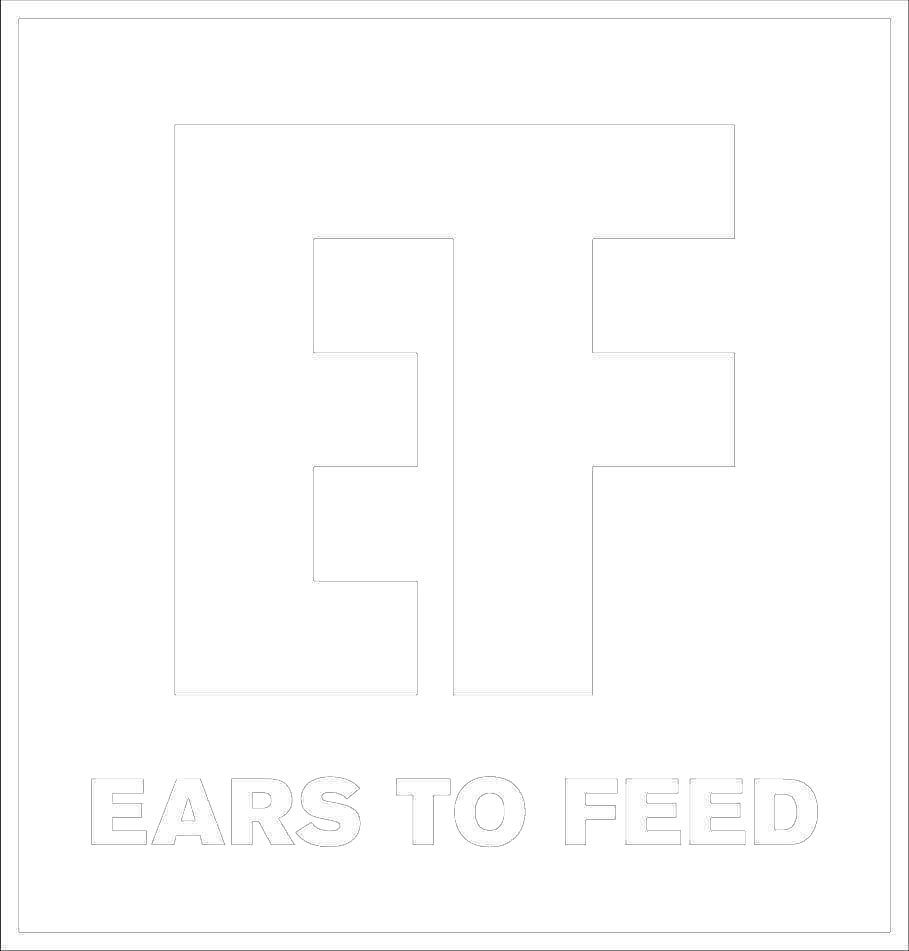This is Sieve’s first interview. It’s also Sieve’s last interview. The experi-punk quartet didn’t know “Prudence” would be one the final songs they’d record together, and Ears to Feed is thrilled to premiere the track today in anticipation of their new split single, out Friday on the label, Ramp Local.
Sieve is one of Philly’s brightest DIY gems in recent memory, and “Prudence” encapsulates the jaunty punk camaraderie of their all-too-brief career. The track’s teetering guitar lines parallel percussive upbeats, recoiling between offset bass riffs and Em Boltz’s gyrating sing-speak vocals. Tied together with Emily Lyon’s high key harmonies, the song is naturally knotted and culminates in utmost “clowncore” fashion.
Sieve’s inception was a classic case of pre-pandemic serendipity.
“We were going to a lot of the same shows, hanging out with a lot of the same people,” said guitarist and vocalist Em Boltz. “We saw each other all the time.”
Each member was already playing in two or more projects, so what was one more? The final lineup of Em Boltz (Corey Flood), Madeline Rafter (Snake Boy Gang), Rachie Weisberg (Yeah, Baby) and Emily Lyon (Likes, Wilt) quickly became an outlet for candid experimentation and good old fashioned fun.
Sieve’s decentralized songwriting process meant all their songs came out of jams, and the band’s creative cycle of practicing and gigging became synonymous with “hanging out,” serving as an unforced format yielding unbridled numbers on hydration, hibernation and honey.
As time went on, Sieve ultimately served as an exploratory channel for its members’ alternative musical pursuits.
“Sieve influenced how I played in other bands,” noted Rafter, who recorded the band’s Three Secrets EP and currently plays in a group called Cars 2. “When we were jamming it always felt really freeform. I felt a lot of room on the drums to be really experimental and try things in different ways that would maybe make no sense, but maybe other people would pick up and read what I was doing. I think it really changed how I played drums and I carried that mindset into other projects.”
Sieve’s brilliance was indebted to this uninhibited, open-minded approach. The band’s blank-slate strategy boosted individual progress among each player, allowing new ideas to develop an increasingly singular sound that, in turn, became a reflection of the band’s personalities.
“We’re all extremely goofy in the best way,” said Boltz. “A lot of the time we’d be making a song and we’d be like, ‘Oh that’s really funny.’ Then we’d be like, ‘actually that’s great.’”
Original Sieve member Boothe Carlson coined the phrase “clowncore,” a well-intentioned remark that pays homage to Sieve’s overtly carnivalesque arrangements. It makes sense and the band liked it enough to add the tag to their Bandcamp page, forever grouped with musicians with maybe a few more gimmicks and a lot more facepaint.
Sometimes Sieve’s own gimmicks ran amok at live gigs. Recalling the band’s batshit cover of Weezer’s “Buddy Holly,” Boltz offered a few words: “Upon trying to cover the song, our first instinct was not to listen to it. It was to totally just make it our own song.” The deconstructed interpretation resulted in the band singing a mere three lines plucked from the chorus. “Ooh-eee-ooh/I look just like Buddy Holly” comprised the bulk of the rendition, appropriately resolved with a four-way harmony of “And you’re Mary Tyler Moore.”
When asked about their favorite Sieve memory, the band divulged the details of an eventful evening in Nashville. What the group anticipated to be a tour stop marred by bigotry and homophobia turned into a night filled with mid-set speaker naps, free fries and an overnight stay in a hotel.
“We didn’t have anywhere to stay that night,” remembered Weisberg. “My mom travels a lot for work and has a lot of Marriott points. We got her to hook us up. We only rented one room. We were only supposed to have only two people. I was so nervous, even though we were totally fine and no one was going to know what we were doing. We slept in the hotel and it was awesome. We went to the buffet in the morning and we brought up a lot of stuff.”
Aside from a few non-practice jam sessions, Sieve went out with two bangs. “We played our two biggest shows, one at Johnny Brenda’s with Red Sea and the other at First Unitarian Church with The Beths. That was a sold out show, by far our biggest show ever,” said Weisberg. “It felt natural, ending.”
Sieve was great. Endings are never easy, but a good thing gone only means more to come, especially with the collective experience Sieve members will take to future pursuits. Currently, Em Boltz is preparing for next month’s release of Enchanted Forest’s visual album Research while Madeline Rafter is looking forward to releasing new music with Snake Boy Gang and The Original Crooks as well as Nannies. Rachie Weisberg hopes to link for safe gigs with Rafter for their performance art project SPIN OFF, and Emily Lyon is digging back into classical piano one Scriabin piece at a time.
So look on the bright side: the video for “The Beekeeper” exists. It’s an excellent video and according to Lyon, “It was so fun, too. I watch it and I’m like, ‘that was a fun day with my friends.’”
It’s difficult watching now knowing Sieve won’t be back when it’s safe to play shows again; however, it’s easy to watch, listen and think of the good tunes, great friends and better times waiting on the other side.
